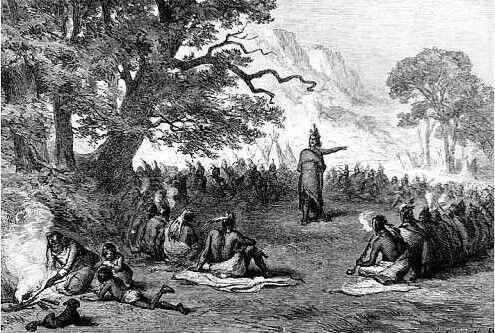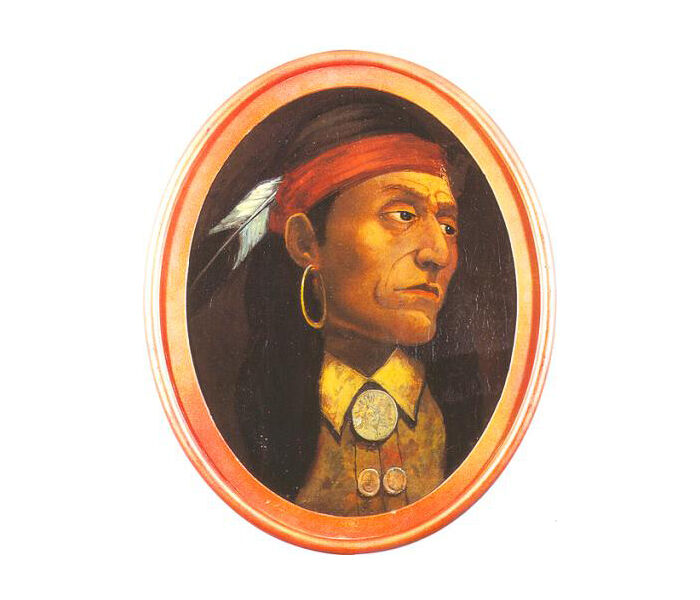The end of the War of the Conquest also marked the end of well-established relationships between the French and Indigenous peoples. The latter were then required to deal with the British who had a very different attitude towards them than the French. While the French considered Indigenous peoples as their allies in their conflict with the British, the British saw them as a conquered people who should submit to Great Britain, the new mother country.
The British created the Indian Department in 1755, a year that also marks the beginning of the War of the Conquest. Its role was to facilitate relationships between Great Britain and First Nations. The Indian Department could negotiate alliances with Indigenous peoples and strive for smooth trade relationships between them and the British.
The takeover of New France by the British led to numerous grievances among First Nations.
Indigenous peoples were now required to trade with the British, who now controlled the fur trade. However, because French competition no longer existed, British merchants increased the price of items they traded with the Indigenous peoples. This put Indigenous peoples at a disadvantage and they demanded better regulation of trade.
They also demanded the return of the gift-giving (donations) practice abolished by General Amherst. Previously upheld by the French, this practice consisted of offering gifts to Indigenous allies. The termination of this practice represented a significant economic loss for Indigenous peoples and went against their diplomatic customs.
Indigenous peoples also demanded protection of their territories, especially south of the Great Lakes and in the Ohio Valley, places long coveted and sought after by the Thirteen Colonies wanting to expand westward.
Indigenous peoples were driven to revolt by the British intention to conquer them as well as the fear of losing territories, the abuse from some merchants, alcohol trafficking, and a reduction in the amount of ammunition and the quantity of gunpowder sold to them. In the summer of 1762, the Indigenous nations of the Great Lakes gathered and formed a coalition. Pontiac, an Ottawa war chief, became the leader.

In 1763, Pontiac urged listeners to rise up against the British.
Source: Pontiac conspiracy [Engraving], Bobbett, A., 19th century, Wikimedia commons, (URL). CC0 1.0.
A coalition assembles multiple individuals or groups to pursue a common objective, commonly with the intent of fighting the same enemy.
In 1763, the coalition attacked the British and took possession of most forts in the Great Lakes region and the Ohio Valley occupied by the British. The Indigenous peoples accumulated many victories at the beginning of this violent conflict. However, several weakened nations decided to make peace with the British in 1764 following many defeats and a smallpox epidemic. Pontiac followed suit by signing the peace treaty in July 1766.

Source: Pontiac [Painting], Stanley, J.M., s.d., Wikimedia commons, (URL). CC0 1.0.
Bobbett, A. (19th century). Pontiac conspiracy [Engraving]. Wikimedia commons. https://commons.wikimedia.org/wiki/File:Pontiac_conspiracy.jpg
Stanley, J. M. (s.d.). Pontiac [Painting]. Wikimedia commons. https://commons.wikimedia.org/wiki/File:Pontiac-chief-artist-impression-414px.jpg